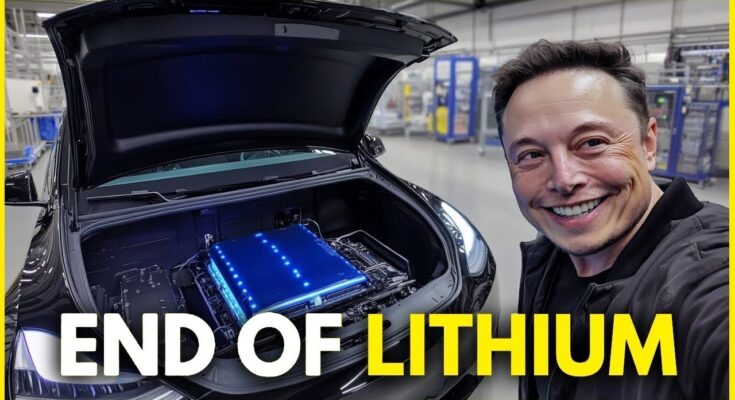Tesla, under the visionary leadership of Elon Musk, has once again made a groundbreaking leap in innovation. The latest advancement—a revolutionary aluminum-ion battery—promises to redefine the electric vehicle (EV) industry with its rapid 15-minute charging capability. This cutting-edge technology could significantly accelerate the mass adoption of EVs and transform multiple industries beyond transportation.
Evolution of Tesla’s Battery Technology
Since its inception, Tesla has prioritized battery technology as the foundation of its success, understanding that energy storage dictates an EV’s range, performance, and cost. The company’s journey began with lithium-ion battery cells in the original Tesla Roadster, utilizing 18650 cylindrical cells. As Tesla grew, so did its need for more efficient energy solutions, leading to the introduction of 2170 cells in the Model 3 and Model Y, followed by the innovative 4680 cells unveiled during the 2020 Battery Day event.
The 4680 cells brought significant advancements, including a fivefold increase in energy density and a sixfold boost in power output. However, Tesla continued its relentless pursuit of faster charging, longer lifespan, and improved integration into vehicle structures. This ambition has culminated in the development of aluminum-ion battery technology—a transformative shift from traditional lithium-ion chemistry.
Aluminum-Ion Batteries: A Game-Changer

Tesla’s aluminum-ion battery represents a paradigm shift in energy storage. Here’s what makes it a potential industry disruptor:
- Ultra-Fast Charging
One of the biggest barriers to EV adoption is long charging times. Tesla’s aluminum-ion battery addresses this challenge with a groundbreaking 15-minute charge time, making EV refueling as quick and convenient as filling a gasoline-powered vehicle. - Higher Energy Density
These batteries pack more energy into a smaller, lighter design, allowing vehicles to achieve longer ranges without increasing battery size. This could lead to EVs with over 500 miles of range per charge, reducing range anxiety for consumers. - Enhanced Safety & Longevity
Aluminum-ion technology reduces the risks of overheating and thermal runaway, thanks to advanced thermal management and non-flammable materials. This results in a safer battery with a longer lifespan, minimizing degradation over time. - Sustainability & Cost Efficiency
Unlike lithium-ion batteries, which rely on scarce and ethically problematic materials like cobalt, aluminum-ion batteries use more abundant and eco-friendly materials. This shift not only reduces production costs but also alleviates environmental and ethical concerns related to mining.

Beyond Electric Vehicles: Expanding Applications
While Tesla’s aluminum-ion battery is a game-changer for EVs, its implications extend far beyond automobiles:
- Residential Energy Storage
High-capacity aluminum-ion batteries could revolutionize home energy storage by efficiently storing renewable energy for extended periods, enhancing energy independence. - Electric Aviation
Lightweight and high-energy-density batteries could propel electric aviation forward, enabling cleaner, more efficient regional flights and significantly reducing emissions. - Space Exploration
Long-lasting and robust power sources are crucial for extended space missions. Tesla’s aluminum-ion technology could support life-support systems, scientific equipment, and other critical functions in space travel.
Challenges & The Road Ahead
Despite the enormous potential of aluminum-ion batteries, Tesla faces several challenges in scaling this innovation:
- Mass Production
Manufacturing aluminum-ion batteries at scale requires new production techniques and supply chain adjustments. Tesla must navigate these complexities to ensure widespread deployment. - Regulatory Compliance
Any new battery chemistry must meet stringent safety and environmental regulations before mass adoption. Tesla will need to collaborate with regulatory bodies to secure approvals for global use. - Consumer Adoption
While Tesla’s reputation for innovation is strong, convincing consumers to transition to a new battery technology requires clear education on its benefits and reliability.
Conclusion
Elon Musk’s latest innovation in battery technology marks a pivotal moment in the evolution of sustainable transportation. The aluminum-ion battery stands to revolutionize not just the EV industry but also energy storage, aviation, and space exploration.
As Tesla continues to push the boundaries of what’s possible, one thing is clear: the future of mobility is not only electric but also faster, safer, and more efficient. With this breakthrough, Tesla is not just adapting to the industry’s evolution—it is actively shaping its future.




